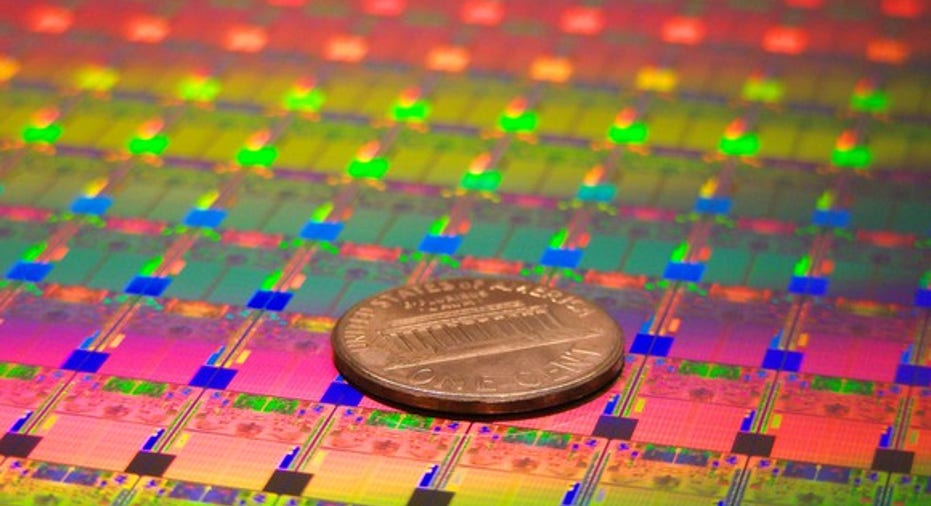Intel Corporation Reportedly Planning to Launch Ultrabook Cannonlake Parts After All

Michael Larabel, with website Phoronix, recently spotted something interesting with respect to microprocessor-giant Intel's (NASDAQ: INTC) upcoming Cannonlake processors, the company's first products manufactured in its upcoming 10-nanometer technology. Larabel says that, in software patches published by Intel's graphics software development team, Intel refers to two families of Cannon Lake parts.
Image source: Intel.
The first is Cannonlake-Y, which is a family of processors targeted at fan-less notebooks, 2-in-1 convertibles, and tablets. The second, and perhaps the more surprising one, is a family of processors known as Cannonlake-U. These will presumably target mainstream thin-and-light notebook and "Ultrabook" computers, with the chips targeting a thermal design power of 15 watts.
Let's take a closer look at what this means for Intel's product portfolio.
Well, that's confusing
To be blunt, I didn't think the odds were good that Intel would commercialize Cannonlake-U. To understand my rationale, a little bit of background is in order.
Intel's current seventh-generation Core processors currently come in the following basic flavors (the first number represents processor core count and the second number represents the graphics performance of the chip -- higher is better and "e" denotes the presence of on-die memory):
- Kaby Lake-U 2+2
- Kaby Lake-U 2+3e
- Kaby Lake-Y 2+2
- Kaby Lake-H 4+2
- Kaby Lake-S 2+2
- Kaby Lake-S 4+2
The "S" chips are aimed at traditional desktop computers, the "H" chips are aimed at high-performance laptops like the 15-inch MacBook Pro, the "U" 2+3e configuration is aimed at mainstream notebook systems that need high-performance integrated graphics, the "U" 2+2 configurations are aimed at mainstream systems that don't need more graphical horsepower, and the "Y" series chips are targeted at fan-less notebooks and 2-in-1 convertible systems.
The various leaks that have hit the web, as well as Intel's own official information, suggest that Intel's seventh-generation Core processors will be succeeded as follows:
- Kaby Lake-U 2+2 -> Kaby Lake-U Refresh 4+2
- Kaby Lake-U 2+3e -> Coffee Lake-U 4+3e
- Kaby Lake-Y 2+2 -> Cannonlake-Y 2+2
- Kaby Lake-H 4+2 -> Coffee Lake 6+2
- Kaby Lake-S 2+2 -> Coffee Lake 4+2
- Kaby Lake-S 4+2 -> Coffee Lake 6+2
Given that virtually every one of today's Kaby Lake processors is already accounted for with a successor, it's difficult to see where a Cannon Lake-U, in a 2+2 configuration, will slot in.
How could Intel position this product?
Here's a conceivable way that Intel can position the Cannonlake-U chips. The Cannonlake-U 2+2 is almost certainly going to be a lower-power product than the Kaby Lake-U Refresh 4+2 part using Intel's 10-nanometer manufacturing technology rather than the 14-nanometer++ technology.It could also have superior graphics performance to the Kaby Lake-U Refresh part, thanks to the use of a new graphics architecture, which Larabel confirms is referred to by Intel as Gen. 10 graphics (Kaby Lake-Refresh/Coffee Lake employ Gen. 9 graphics).
Intel may simply give system vendors a choice. For systems where higher CPU performance/more cores is important, pick Kaby Lake-U Refresh. For systems where lower power and/or improved graphics performance is critical, then pick Cannonlake-U.
In other words, in my list of parts above, Kaby Lake-U 2+2 could map not just to Kaby Lake-U Refresh 4+2, but also to Cannonlake-U 2+2, depending on the characteristics that the system vendor is aiming for.
10 stocks we like better than IntelWhen investing geniuses David and Tom Gardner have a stock tip, it can pay to listen. After all, the newsletter they have run for over a decade, Motley Fool Stock Advisor, has tripled the market.*
David and Tom just revealed what they believe are the 10 best stocks for investors to buy right now... and Intel wasn't one of them! That's right -- they think these 10 stocks are even better buys.
Click here to learn about these picks!
*Stock Advisor returns as of April 3, 2017
Ashraf Eassa owns shares of Intel. The Motley Fool recommends Intel. The Motley Fool has a disclosure policy.



















